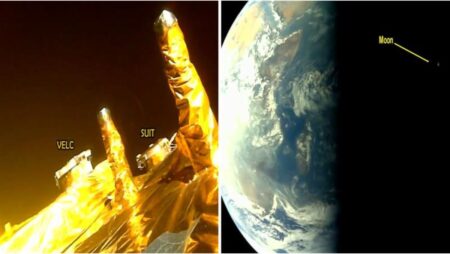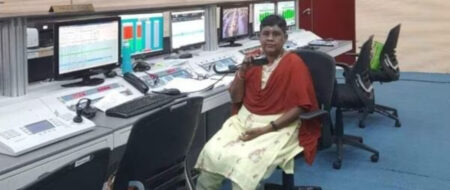ISRO feels the scientific arena is expanding in India as Chandrayaan 2 successfully finishes two whole years orbiting the Moon.
Chandrayaan 2 is equally successful after Chandrayaan 1 in providing essential data of the Moon.
On Monday, September 6th 2021, the esteemed lunar mission Chandrayaan 2’s orbiter successfully finished two years orbiting the Moon.
To memorialize the event, the Indian Space Research Organisation (ISRO) arranged for a two-day Lunar Science Workshop 2021 where the chairperson, Dr K Sivan, also released the data of the Moon collected by the orbiter.
The Workshop, discoveries and more
In the introductory speech, the chairman mentioned the eight payloads onboard Chandrayaan 2 are overseeing remote sensing and in-situ observations of the Moon from an altitude of 100 km from the surface.
Sivan also said the Chandrayaan 2 has till now completed 9000 rounds of the Moon.
Even after two years of a crash landing on the far side of the Moon, Chandrayaan 2 is triumphantly providing data which the Workshop will present in the live stream on ISRO’s website and Facebook page.
The Workshop is essentially organized and plans to telecast it to benefit the students, academia highly, and institutes to know more and share their wisdom regarding the ongoing developments of this second mission.
Apart from detecting the apparent presence of water and hydroxyl molecules, the apparatus onboard the orbiter can capture nanoflares on the surface of the Moon.
This data further enables the science community to investigate why the outermost part of the Sun’s atmosphere is much hotter than its surface.
In addition to the virtual discussion of the science products of the eight payloads, there will be discussions on Chandrayaan 2 mission, operations, data archival aspects and tracking.
All the data, including raw data, has been made available to the public for the advantage of the entire science community of India, who can now access the information to conduct further research on the subject.
ISRO has also invited several esteemed scientists from the Indian Institute of Science Education and Research, Kolkata; Indian Institute of Science, Bangalore; and Indian Institute of Technology, Roorkee.
What’s next for the space agency
As per the latest information, the space agency is planning for an upcoming Chandrayaan 3 mission that will use the spacecraft that is orbiting to establish communication with the Earth.
The chairman is pleased with the science results and finds them quite encouraging and motivating for the science community.
The Chandrayaan 2 mission, which is the successor of the Chandrayaan mission, consists of a Lander, Rover and Orbiter, has aimed to survey the southern part of the Moon and all the areas of the exosphere along with the surface and sub-surface of the Moon.
While the Lander and the Rover got destroyed in the crash while landing, the surviving orbiter of Chandrayaan 2 showed nominal results.
ISRO is considering using the same orbiter for its third mission, which was delayed due to the pandemic and is currently launching in 2022.












